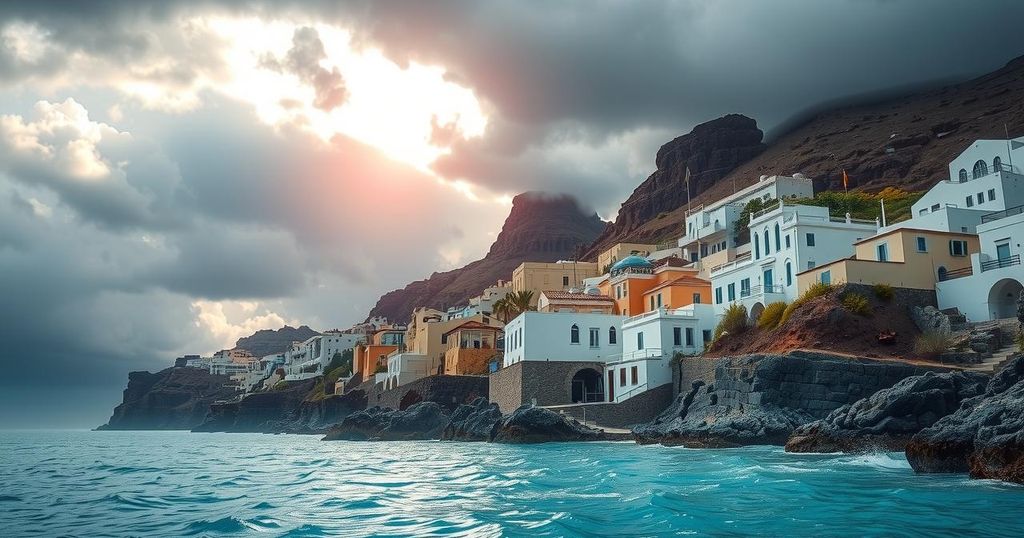Greece has declared a state of emergency on Santorini following a significant increase in seismic activity, culminating in a magnitude 5.2 earthquake. Emergency services have been mobilized to provide support, resulting in widespread evacuations and school closures across nearby islands. The situation remains under control with local residents adhering to safety advice while some tourists continue to visit the island.
The Greek government has declared a state of emergency on the tourist island of Santorini due to increased seismic activity. This decision follows nearly a week of undersea tremors, culminating in a magnitude 5.2 earthquake, the most powerful recorded since the activity began on January 31. The Ministry of Civil Protection announced that this declaration will facilitate immediate access to resources and support for the affected island.
Emergency services have been mobilized in response to the seismic events. Government spokesman Pavlos Marinakis indicated that diverse agencies, including fire departments, police, the coast guard, armed forces, and emergency medical services, have been deployed with additional personnel and specialized equipment to both Santorini and surrounding regions. Despite the earthquakes causing minimal damage, they have led to a significant evacuation of residents and seasonal workers.
As a precaution, thousands have fled to the mainland, primarily by ferry. Schools across 13 nearby islands have been closed, public events have been canceled, and travel to Santorini has been restricted. Social media has captured alarming footage of dust clouds following landslides in areas with steep ridges overlooking the island’s scenic towns. A local mentioned that the situation remained “calm” as residents adhered closely to local authority guidelines.
The main town, Fira, now appears desolate, interrupted only by small tour groups, notably those from Asia, who continue to visit amid the island’s quieter state. Situated on the boundary between the African and Eurasian tectonic plates, Greece is recognized as one of Europe’s most earthquake-prone nations. Historically, Santorini has faced significant volcanic eruptions, particularly one around 1600 BC, although it has not seen volcanic activity since 1950. Experts have determined that the recent seismic activity is not related to any volcanic events in the Aegean Sea.
Santorini, a picturesque island in Greece, is located at the meeting point of two major tectonic plates, making it highly susceptible to seismic activity. Historically, the island has endured significant events, including one of history’s largest volcanic eruptions around 1600 BC. Although dormant in terms of eruptions since 1950, the island’s geological characteristics continue to pose risks. These recent tremors have raised public concern and prompted governmental action to ensure safety and provide support to residents.
In summary, Santorini has declared a state of emergency in response to a series of earthquakes, peaking with a magnitude 5.2 tremor. Emergency services are actively engaged in managing the situation, ensuring the safety of residents and tourists. While the island has experienced minimal damage, the seismic activity has resulted in the evacuation of many, with authorities emphasizing the importance of following safety protocols.
Original Source: www.independent.co.uk






